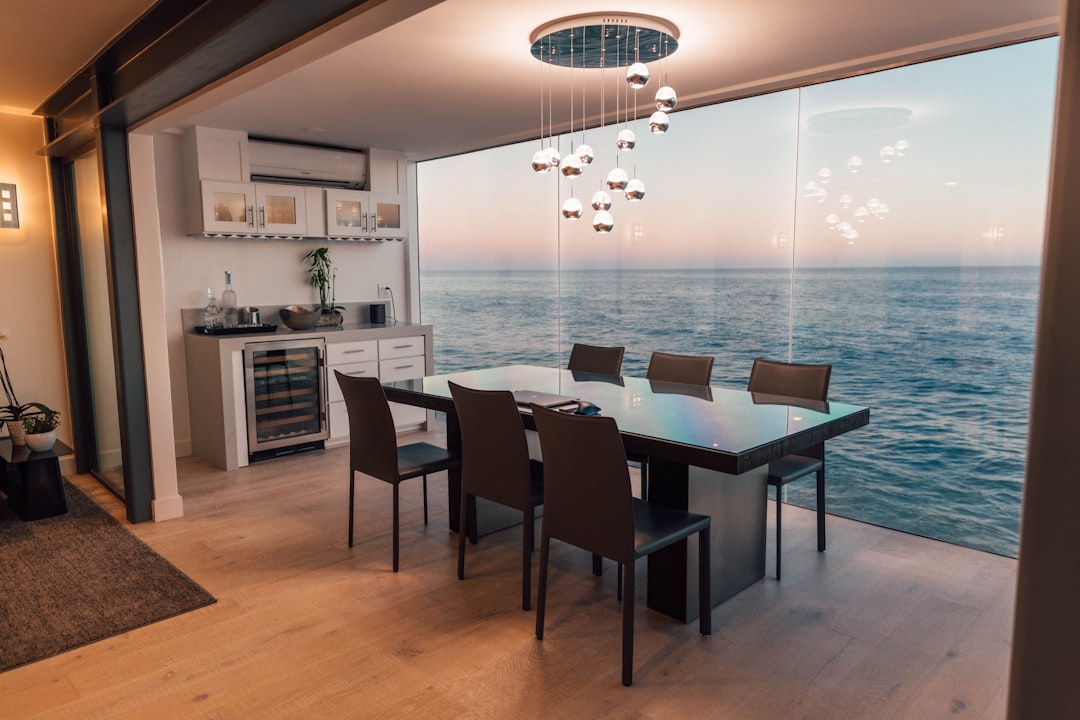The interior design field is growing fast. The Bureau of Labor Statistics says there will be a 5% growth in jobs from 2020 to 2030. This means finding the right school is more important than ever.
We’re here to help you find your way in interior design education. In this guide, we look at the top institutions. They stand out for their great programs, expert teachers, and job success.
We consider things like accreditation, course content, teacher experience, and job rates. This gives you a full picture of why these colleges are the best.
Key Takeaways
- Top interior design schools offer accredited programs that meet industry standards.
- Faculty expertise and industry connections play a crucial role in student success.
- Curriculum that balances theory and practical skills is essential.
- Job placement rates are a key indicator of a program’s effectiveness.
- Graduates from top programs often have a competitive edge in the job market.
What Makes a College Great for Interior Design?
Looking for the perfect college for interior design involves several key factors. These factors greatly influence the quality of your education and future job prospects.
Accreditation and Rankings
Accreditation is vital when choosing an interior design program. It confirms the college meets industry standards, ensuring a quality education. Seek programs with accreditation from well-known agencies.
Also, rankings can give you a glimpse into a program’s reputation and success. While important, rankings shouldn’t be the only thing you consider.
Curriculum and Faculty Experience
A strong curriculum is key for a solid interior design education. It should include a wide range of subjects, from design basics to technical skills. Experienced teachers offer valuable guidance and mentorship, helping students grow.
- Studio-based courses for hands-on experience
- Theoretical foundations in design history and theory
- Technical skills in design software and technologies
Job Placement Rates
Job placement rates show how well a program prepares students for the job market. High rates mean the program is effective. It’s important to look at alumni success stories to gauge your future.
“The right program can launch your career. Look for colleges with strong industry connections and a history of successful graduates.”
By examining these factors, you can make a smart choice for your interior design education.
Top Interior Design Programs in the United States
The United States boasts a wide range of top-notch interior design programs. These programs are known for their academic quality, innovative teaching methods, and successful graduates. We will look at the best colleges for interior design and highlight some notable schools with unique strengths.
Best Overall Colleges
The top colleges for interior design in the U.S. are celebrated for their well-rounded programs. They cover both the creative and technical sides of the field. Some leading institutions include:
- Rhode Island School of Design (RISD), known for its rigorous curriculum and faculty of industry professionals.
- Savannah College of Art and Design (SCAD), which offers a variety of degree programs in interior design and related fields.
- University of Cincinnati’s DAAP program, recognized for its co-op program that provides students with valuable industry experience.
These colleges are highly regarded for their ability to prepare students for successful careers in interior design.
Notable Mentions
Aside from the best overall colleges, there are other schools with unique strengths in interior design education. These include:
- Cornell University’s College of Human Ecology, which offers a highly regarded program in interior design that focuses on the intersection of design, human behavior, and the built environment.
- Pratt Institute, known for its rigorous academic programs and faculty of practicing designers.
These institutions offer students a range of options to pursue their interests in interior design.
Detailed Review of Top Programs
Several schools are known for their reputable interior design programs. They are praised for their tough courses, skilled teachers, and successful graduates. We’ll explore three top colleges: Rhode Island School of Design, Savannah College of Art and Design, and University of Cincinnati.
Rhode Island School of Design
The Rhode Island School of Design (RISD) is famous for its interior architecture + design program. It’s known for its detailed curriculum and focus on both theory and practice. The school’s teachers are top designers who share their real-world knowledge with students.
Savannah College of Art and Design
The Savannah College of Art and Design (SCAD) has a respected interior design program. It covers both creative and technical sides of design. SCAD’s teachers are industry pros, and the school has the latest tech for hands-on learning.
University of Cincinnati
The University of Cincinnati’s School of Design, Architecture, Art, and Planning (DAAP) is known for its interior design program. It’s accredited by the Council for Interior Design Accreditation (CIDA). The program mixes studio work with theory, getting students ready for many design careers. The University’s co-op program also gives students real-world experience.
These top schools for interior architecture lead in design education. They give students a full education and prepare them for careers in design.
Factors to Consider When Choosing a College
When looking for the perfect college for interior design, many things matter. The right choice can really shape your education and career path.
Location and Campus Environment
The college’s location and campus can really affect your experience. Being close to design centers can open doors for internships and networking. Also, the campus facilities, like design studios and libraries, help create a great learning space.
Class Size and Student-to-Faculty Ratio
A smaller student-to-faculty ratio means more one-on-one attention. This is super helpful in interior design, where practical guidance is key. Look at the top interior design colleges to see their ratios.
Industry Connections and Internships
Colleges with strong ties to the industry offer great internships. These can lead to jobs after you graduate. It’s important to check the college’s network and success stories of its alumni.
| College | Location | Student-to-Faculty Ratio | Internship Opportunities |
|---|---|---|---|
| Rhode Island School of Design | Providence, RI | 9:1 | Strong industry connections |
| Savannah College of Art and Design | Savannah, GA | 14:1 | Internship programs available |
| University of Cincinnati | Cincinnati, OH | 13:1 | Co-op programs with top design firms |
Financial Considerations
When looking at colleges for interior design, think about the money involved. Tuition costs are a big deal. Knowing the financial side helps you choose wisely.
Tuition Costs and Financial Aid Options
Tuition for interior design programs changes a lot. It depends on the school, its location, and if it’s public or private. Tuition can be from $10,000 to over $50,000 a year. It’s key to look at both the cost and the financial aid you can get.
Colleges offer financial help like grants, loans, and work-study. You need to fill out the FAFSA to see if you qualify. Some schools also give aid based on your grades or financial situation.
Scholarships for Interior Design Students
Scholarships are a big help for interior design students. There are many out there, from colleges to outside groups and design associations.
The American Society of Interior Designers (ASID) Foundation gives out scholarships. Also, schools like the Rhode Island School of Design offer scholarships for interior design students.
“Investing in your education is crucial, but it’s equally important to understand the financial commitments involved. Exploring all available financial aid options and scholarships can make a significant difference in your ability to pursue your dreams in interior design.”
When you’re researching colleges, ask about scholarships and how to apply. Some scholarships need a portfolio, while others look at grades or need.
By looking at tuition, financial aid, and scholarships, you can plan your education better. This helps you make a smart choice for your interior design future.
The Role of Technology in Design Education
Technology is changing how students learn interior design. Schools use advanced tools and software to make learning fun and interactive.
Virtual Reality and Design Software
Virtual reality (VR) and design software are changing interior design. VR lets students dive into their designs, making them feel like they’re really there. This helps them understand space better and boosts creativity.
Tools like Autodesk Revit and SketchUp help students make detailed designs. These are the same tools used in the real world, so students are ready for their careers.
Online Learning Options
Online learning has made interior design education easier to get. Online courses and degree programs let students learn from anywhere, anytime. This is great for those with busy lives.
Online learning also brings students together from all over. They share ideas and learn from each other, making the experience richer.
Community and Networking Opportunities
Being part of a vibrant community is key for interior design students. It makes their learning experience better and opens doors to many networking chances. These chances are crucial for their future careers.
At top interior design universities, students join various student groups and clubs. These groups let students work on projects together, share ideas, and learn skills outside class.
Student Organizations and Clubs
Student groups and clubs are big in college life for interior design students. They help students do community service, enter design contests, and go to industry events. For example, many colleges have ASID chapters. These chapters give students access to resources, mentorship, and networking events.
Being in student groups has many benefits. Students can:
- Learn to lead by taking on roles in the group
- Get experience in planning and managing events
- Meet peers and professionals in the field
- Make their resume better with extra activities
At the top-ranked interior design schools in America, students can join clubs focused on sustainable design, historic preservation, or design software. This lets them learn more about what interests them.
Alumni Networks in Interior Design
Alumni networks are also very valuable for interior design students. They offer mentorship, job chances, and advice. Many interior design universities have active alumni groups. These groups hold events, workshops, and seminars. This helps students and graduates stay connected and up-to-date with industry trends.
A recent survey found that many interior design professionals got ahead because of their college’s alumni network. One alum said,
“The connections I made through my university’s alumni network were key to my first job and are still valuable today.”
To show how important alumni networks are, here’s a table comparing them at different interior design universities:
| University | Alumni Network Size | Notable Alumni Achievements |
|---|---|---|
| Rhode Island School of Design | Over 10,000 | Awards in sustainable design |
| Savannah College of Art and Design | Over 50,000 | Leadership roles in top design firms |
| University of Cincinnati | Over 20,000 | Innovations in design technology |
Being part of a strong alumni network can really help a graduate’s career. It’s important for students to think about a university’s alumni network when picking a program.
The Importance of Portfolio Development
In the competitive field of interior design, a strong portfolio can make you stand out. As we help you choose a reputable interior design program, understanding portfolio development is key to your career.
A well-made portfolio shows your skills, creativity, and growth. It’s often the first thing admissions committees or employers see. It’s crucial for making a good first impression.
What to Include in Your Portfolio
Your portfolio should highlight your best work. It should show a variety of skills and projects. Here are some important things to include:
- Academic projects that show your grasp of design principles and techniques
- Internships or professional experiences that show you can apply what you’ve learned
- Personal projects that show your creativity and innovation
- Case studies or descriptions of your design process for certain projects

Tips for Creating an Impressive Portfolio
Creating a standout portfolio takes planning and presentation. Here are some tips to make your portfolio shine:
- Keep it updated: Add new projects and remove old ones that don’t show your best work.
- Show your process: Include sketches, drafts, and other elements that show how you design.
- Tailor it to your audience: Customize your portfolio for different applications, like academic admissions or job applications.
- Get feedback: Ask for feedback from mentors, peers, or professionals to improve your portfolio.
By focusing on portfolio development and education in a reputable interior design program, you’ll be ready for a successful career in interior design.
Career Opportunities After Graduation
Finishing an interior design program opens many career doors. Each path has its own challenges and rewards. The field of interior design is both diverse and dynamic.
Different Career Paths in Interior Design
Interior design graduates have many career options. Some might focus on residential design, helping homeowners with their homes. Others might prefer commercial design, creating spaces for businesses.
Other paths include:
- Designing for sustainability and caring for the environment
- Working in historic preservation, saving old buildings
- Roles in design consulting, giving advice to others
Salary Expectations and Job Market Trends
Knowing about salaries and job trends is key for new graduates. The Bureau of Labor Statistics says interior designers make about $56,040 a year. But, pay can change based on where you work, how long you’ve been doing it, and the job itself.
Today, there’s a big need for designers who know about green design and new tech. As we go on, the need for talented designers will keep growing. This is because we all want spaces that are both beautiful and useful.
Further Education and Certifications
Getting advanced degrees and certifications can really help an interior designer’s career. The field is always changing, and more education helps designers keep up.
Advanced Degrees in Interior Design
Going for a higher degree in interior design can really boost your skills. Many programs offer master’s degrees in areas like sustainable design or design theory.
Here are some benefits of advanced degrees:
- More knowledge in special areas
- Better job chances, like senior roles or teaching
- Higher pay is possible
- Great for networking with other designers and academics
| Degree Level | Focus Areas | Career Outcomes |
|---|---|---|
| Master’s | Sustainable design, design theory, design management | Senior designer, design director, educator |
| Doctoral | Research in design history, theory, or technology | Researcher, professor, industry consultant |
Relevant Certifications for Designers
Getting certifications can also boost a designer’s career. The NCIDQ (National Council for Interior Design Qualification) certification is very respected. It shows you’re really good at what you do.
Here are some benefits of certifications:
- More job chances because you show you’re skilled
- More trust from clients and bosses
- Keep up with the latest in the field
- Can earn more money
By getting more education and certifications, interior designers can really improve their careers. This helps them stay ahead in a fast-changing field.
Testimonials from Students and Alumni
Students and alumni share their stories about interior design education. Their experiences help us see what makes a top college stand out.
Success Stories
Many students from top interior design programs succeed in their careers. For example, Emily Wilson graduated from Rhode Island School of Design. She now leads a design team in New York City.
Emily says her education gave her a strong base in design. It helped her in both creativity and technical skills.
Michael Lee also had a great journey. He graduated from Savannah College of Art and Design. Now, he runs his own design studio focused on sustainability.
Michael credits SCAD for his unique design view and professional network. He says it was crucial for his success.
Advice from Recent Graduates
Recent graduates share tips for future students. “Get involved in as many projects as possible during your time in school,” advises Sarah Taylor from University of Cincinnati. “Also, build a strong portfolio to show your skills and creativity.”
James Davis also has valuable advice. He says internships are key. “Interning while studying gave me practical experience and made me more competitive.” He also recommends using college career services and networking.
Listening to students and alumni helps us understand different interior design programs. This insight is crucial for those considering a career in design and looking for the right college.
Conclusion: Choosing the Right College for You
Choosing the right college for interior design is a big decision. It can greatly affect your future career. We’ve looked at many factors, like accreditation and curriculum, to help you decide.
Think about what you want to achieve in your career. Look at which programs will help you reach your goals. This way, you can choose a college that matches your career dreams.
Key Considerations
When picking a college, remember the importance of accreditation and faculty experience. These can greatly impact your education and future job chances. We’ve listed some top colleges for interior design to help you decide.
Final Steps
Choosing a college is about finding the right one for you. Do your research and visit campuses if you can. This will help you make a smart choice for your interior design education.



